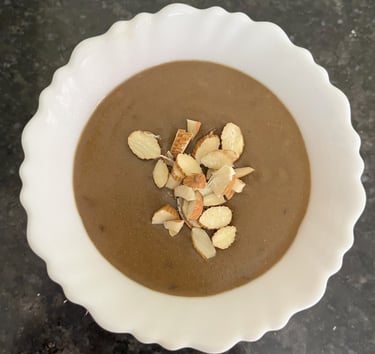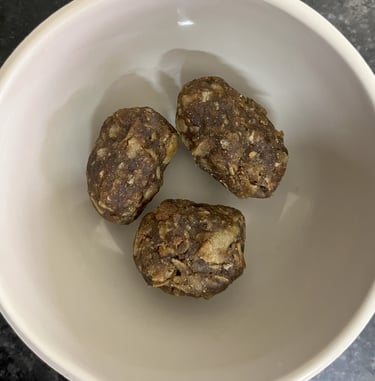Traditional Bajra Recipes from different Indian States
Gluten free and low GI-value Bajra (Pearl Millet) Recipes from different parts of India
FOOD
Twinkle Suri
10/22/20245 min read
Let's talk about Bajra (Pearl Millet)
Bajra is known for being a gluten-free grain, high in fiber, and packed with essential nutrients such as iron, calcium, and B vitamins. These attributes help in maintaining energy levels and ensuring proper hydration, which is vital for sustaining an active lifestyle in hot and arid environments. The other health benefits of bajra are particularly noteworthy, especially for individuals managing diabetes. Its low glycemic index makes it an excellent choice for those looking to stabilize their blood sugar levels. Foods with a low GI are digested and absorbed slowly, preventing quick spikes in blood sugar levels, which is crucial for maintaining stable glycemic control. The incorporation of bajra in a diabetic-friendly diet not only aids in managing glucose levels but also provides a feeling of fullness, thereby helping in weight management—a crucial aspect of diabetes care. High fiber content of bajra aids in regulating digestion and promoting satiety, which can help in appetite control. Fiber also contributes to more gradual digestion of carbohydrates, further stabilizing blood sugar levels. .
Furthermore, regular consumption of bajra has been linked to various health benefits. Studies suggest that incorporating bajra into one’s diet can result in enhanced lipid profiles and better weight management, both of which are critical for individuals with diabetes. The nutrients present in bajra work synergistically to promote not just blood sugar management but also overall well-being. Thus, including bajra in daily meals can significantly contribute to effective diabetes management and promote a healthier lifestyle.
DISH I: Raab (Rajasthan)
Bajra Raab is a traditional dish originating from the heart of Rajasthan, celebrated not only for its delectable taste but also for its nutritional value. The health benefits of bajra are particularly noteworthy, especially in the context of Rajasthan's harsh desert climate. Made primarily from bajra, or pearl millet, this dish holds a significant place in the culinary heritage of the region. Bajra has been cultivated in arid landscapes for centuries, making it a staple grain in Rajasthan. Its ability to grow in tough conditions, coupled with its rich nutritional profile, positions it as a crucial food source for the local population. This dish is often prepared during the colder months. Its warm, soupy consistency provides warmth and satisfaction, making it a popular comfort food among locals. Generations of Rajasthani families have handed down this recipe, incorporating it into their daily lives as a cherished culinary tradition. This tradition underscores the significance of Raab in fostering familial bonds, bringing individuals together around a shared meal filled with memories and culture.
Ingredients:
Pearl Millet (Bajra) flour - 4 tbsp
Jaggery (Gur) powder - 1 tbsp
Ghee - 2 tsp
Carom (ajwain) seeds - 1 tsp
Salt - 1/2 tsp
Dry ginger powder - 1 tsp (optional)
Water - 2 cups
Chopped almonds/ other nuts - 1 tbsp (optional)
Preparation:
Heat the vessel and add in the ghee.
Once the ghee is hot, add the carom seeds and cook till they splutter.
Now add the pearl millet (bajra) flour and gradually roast the flour over a medium flame, stirring continuously to avoid burning. This process typically takes about 8 to 10 minutes, until the flour emits a nutty aroma and takes on a slightly darker hue.
Now, add the jaggery, salt and dry ginger powder. Before it starts to accumulate, add the water simultaneously. Mix it thoroughly with a whisk or wooden spoon. This step is vital as it helps prevent lumps from forming and ensures an even texture. Continue to stir the mixture until it thickens, which usually takes around 15 to 20 minutes. Maintain a consistent heat to avoid undercooking or overcooking the raab.
As the mixture thickens, keep a close eye on the temperature. If necessary, adjust it to maintain a low simmer. A common mistake during this process is to rush through cooking; patience is essential for developing the distinct flavor of Bajra Raab. Once it reaches your desired thickness, tur off the flame and let it cool a bit.
Bajra Raab is traditionally served warm. But you can let it cool at room temperature, add a pinch of cumin powder and serve.
For an authentic experience, accompany it with diced onions, fresh coriander, and a dollop of ghee. Consider pairing it with a side of spicy pickle, chutney or a salad for a balanced meal. The simplicity of this dish allows its rich flavors to shine, making it a beloved staple in Rajasthani cuisine.
DISH II: Choorma (Haryana)
Bajra Choorma is a traditional dish from Haryana, is more than just a culinary delight; it holds significant cultural value, particularly during festivals and family gatherings. Its association with community and family is deeply rooted, making it a beloved part of regional celebrations and winters, where people often gather to enjoy its rich, nutty flavor and unique texture. The preparation of Bajra Choorma is often communal, involving family members coming together to make this flavorful meal.
As dietary preferences continue to evolve, there is a growing interest in adapting traditional dishes to meet contemporary health guidelines. Bajra Choorma can be modified to enhance its nutritional profile while retaining its authentic flavors. By using healthier sweeteners, portion control, and mindful ingredient selection, this traditional dish can serve as a delectable and health-conscious option for those who are diabetic or seeking a nutritious meal. Thus, Bajra Choorma stands out as a versatile dish that bridges the gap between cultural heritage and modern dietary needs.
Ingredients:
Bajra (Pearl Millet) flour - 1 cup
Water - 2 to 3 tbsp (for dough preparation)
Jaggery Powder - 1/8 cup (or as per taste)
Ghee - 1.5 tbsp
Preparation:
The preparation of Bajra Choorma begins with roasting bajra flour until it's aromatic, followed by gradual addition of water to form dough. This step is crucial, as it not only enhances the flavor but also keeps the nutritional content intact. Let the dough rest for a couple of minutes. After that, prepare the bajra chapatis by slowly shaping them with your hands. After they cool to a temperature where you can touch them with your hands, start breaking them into smallest possible size with your hands. Combine the pieces with jaggery and ghee using your hands until everything is mixed thoroughly. For optimal taste, allow the mixture to rest for a few minutes before shaping it into small balls or patties. This resting period not only helps in binding but also enhances the flavors.
One of the simplest ways to enjoy this diabetic-friendly delight is to pair it with a serving of low-fat yogurt or buttermilk. These accompaniments provide a refreshing balance to the nuttiness of bajra while aiding digestion and offering a boost of protein and calcium. Another modification could be integrating dried fruits like raisins or chopped nuts in moderation, providing natural sweetness and healthy fats, further enriching the nutritional profile of the dish.
So what are you waiting for? The delicious and warm recipes from different parts of India are right at your screen with such a delectable and nutritious ingredient in sight! Give it a go!






